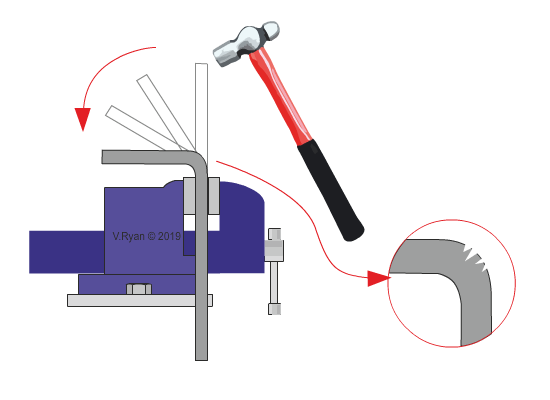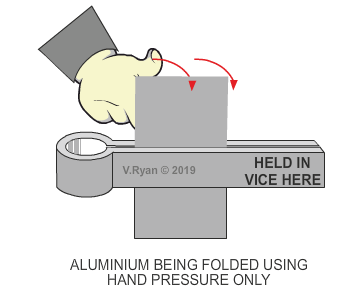| CLICK HERE FOR INDEX PAGE |
| |
| COLD WORKING ( PLASTIC DEFORMATION) OF METALS |
V.Ryan © 2019 |
| |
| PDF FILE - CLICK HERE FOR PRINTABLE WORKSHEET |
| |
Cold working of metals, is when a metal is rolled, folded, deformed, reshaped, without the need for the application of heat. A very good example of cold working, is when a length of steel is placed in a vice and simply ‘folded’ to an angle, by the force of hammer blows. |
| |
| Cold working stretches the crystalline structure within the metal, permanently. The metal becomes stronger, because the crystalline structure resists further change. |
| |
| However, the resulting metal may become ‘brittle’, a metal that loses some of it’s ‘elasticity’ and can quite simply break or crack, if the cold working process is incorrectly applied. |
| |
| Cracks can appear after incorrect cold working. |
 |
| |
|
|
| |
| Cold working increases the tensile strength of the metal, but reduces its ductility / flexibility. |
| |
 |
| |
| Another example of cold working, can be seen with the technique called planishing. Planishing a sheet metal such as copper, reshapes it and leaves it work hardened and less flexible. Click here for a link to planishing. |
| |
| Thin gauge sheet aluminium, can be cold worked quite easily. It can be cut effectively with tin snips, it is easy to file and can be folded using hand pressure and folding bars. |
|
 |
| |
|
|
| |
| CLICK HERE FOR EQUIPMENT AND PROCESSES INDEX PAGE |
| |
|
| |
|


